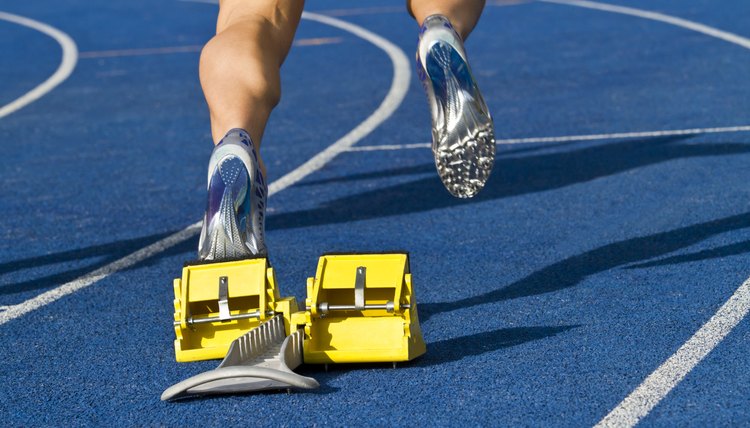How To Fit Sprinting Spikes

Track and field events are timed to the hundredth of a second. That may be a minuscule amount of time, but it can be the difference between winning and losing, or between setting a new personal best or just coming agonizingly close. Sprinting events in outdoor track and field range from 100 meters to 400 meters. Part of performing your best at these distances is having the proper equipment, such as a pair of sprinting spikes. But having sprint spikes isn't enough. You also need to make sure they fit properly.
To find the best fit you need to try on and compare a few sprint spike styles and sizes. A running specialty store provides the best place to find a wide selection of sprint spikes. Spikes come without the actual metal spikes screwed into the shoes. You can run in the shoes without the spikes attached on a carpet or rubber surface without causing any damage to the spikes or the floor.
Put on the sprint spikes and check their length. Sprint spikes should fit snuggly without cramping your toes. You do not want any excess room in your spikes, as that will cause you to lose power and speed when you race. The spikes should feel tighter than your normal athletic shoes but not so tight that you feel uncomfortable. Make sure you're trying on sprint spikes and not distance spikes.
Try on your spikes with the same socks you'll wear while racing.
Run in the spikes. Some spikes that feel comfortable while you stand still might not suit your running style. Taking even a few strides in the spikes can help you determine whether they fit properly and are the best spikes for you.
Put on another pair of spikes. After you try one pair it's time to try on another. Repeat the same fitting process with the second pair. Keep trying on spikes until you find the one with the best fit and feel.
Understand that sprint spikes do not come in multiple widths, so if you have wider feet or narrower feet you may have a more difficult time finding spikes that fit well.
References
Writer Bio
A health and fitness writer since 2008, Aaron Matthew specializes in writing about health, fitness and mental performance topics for various websites including LIVESTRONG. He holds a Master of Arts degree in kinesiology from San Jose State University.
